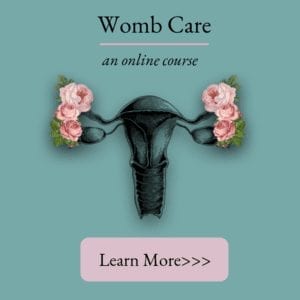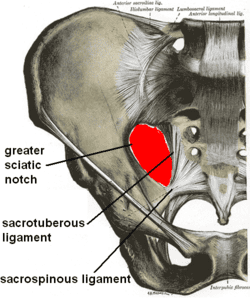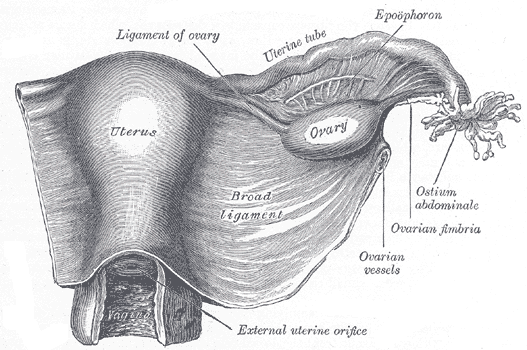In this article, I’ll teach you about uterine ligaments and why uterine ligaments and uterine position are so important.
Learn abdominal massage, alignment, and movement practices for reproductive health in my online Womb Care course!
NCBTMB Approved Provider
When you complete both the Free The Belly Abdominal Scars & Restrictions course & the Womb Care course you will be eligible for 14 CEUs approved by NCBTMB for home-study self-care continuing education credits! These courses are combined for the 14 CEU’s.
The Wandering Womb
“The belief in the “wandering womb” was found in ancient Greece. One description of the theory of a “wandering womb” comes from Aretaeus, a physician from Cappadocia, who was a contemporary of Galen in the 2nd century AD. He wrote that the uterus could move out of place, and float within the body.”…. “Edward Jorden, author of The Suffocation of the Mother, used hysteria as an explanation for mysterious medical occurrences in young women. He supposed that the hysteria caused by the “wandering” of the womb around the body was the source of witchcraft, and often presided in witchcraft-related trials as an expert on the subject. The Suffocation of the Mother connected the phenomenon of hysteria with actions like singing, laughing, crying, and choking.” Source
Luckily, we now know that there is no way that the womb will wander through the body and cause suffocation because it is well supported by ligaments. These are specialized ligaments that often provide a pathway for blood vessels and allow for some movement because the uterus does need to move as it grows with a fetus, or as the bladder and rectum fill. The uterus also moves during intercourse, menstruation and ovulation!
Uterine Ligaments
Below you will find an overview of the uterine ligaments and their attachment points:
Round ligaments are thin fibro-muscular cords that run from the lateral aspect of the fundus of the uterus and travel anterolaterally through the inguinal ring and canal and connect to the superficial perineal fascia at the labia majora. The round ligaments pass through the two layers of the broad ligament. The round ligaments lengthen from 4-5 inches to up to 18 inches or so during pregnancy! The round ligaments help maintain the anteverted position of the uterus.
Broad ligament: connects the uterus to the lateral walls of the pelvis. The broad ligament is an extension of the peritoneum and envelops the uterus in its folds, so it appears as two flat wide ligaments extending outward laterally. From the picture below you can see how the position of the rib cage and motility /mobility of the digestive organs can affect the ligaments of the organs below via the peritoneum. Everything is connected!
Utero-sacral ligaments: The name implies that the uterosacral ligaments attach the uterus directly to the sacrum, but that is the case only 7% of the time. This study shows, “the origin of the uterosacral ligament from the genital tract extends from the cervix to the upper vagina. The insertion on the pelvic sidewall occurs to the sacrospinous ligament (see image below) and the coccygeus muscle in 82% of all cases, but in only 7% do the uterosacral ligaments insert on the sacrum and 11% the piriformis muscle, the sciatic foramen, or the ischial spine. This suggests that the uterosacral ligaments exhibit greater anatomic variability than their name implies, and this might be an important insight for the understanding of the pelvic organ support mechanism.” This ligament prevents the cervix from moving forward toward the bladder and from prolapsing. Given the attachment points, it makes sense that the position of the femurs, sacrum, and pelvis plays a supportive role. Can you see the importance of the squat and posterior push off (using the gluteus while walking) for optimal sacral positioning? The gluteal muscles are the main force keeping the sacrum from moving anteriorly. Remember the puppeteer image… sacrum=puppeteer handle thingy, uterosacral ligaments=strings, and the uterus=puppet
Cardinal ligament: Are known as the main supporting ligaments of the uterus, upper vagina, and cervix. It attaches in a circular pattern around the cervix and moves laterally to the obturator fascia along the pelvic sidewalls. Inferiorly it is continuous with the fascia on the upper surface of the levator muscles! The obturator internis attaches to the medial aspect of the greater trochanter (see image above), so this tells me (I’m guessing, I haven’t seen any studies on this) a neutral femur would help support the cardinal ligament. It also, makes me wonder if an “incompetent cervix” has to do with a disruption of flow through the ligament to the cervix due to poor alignment or tight pelvic floor.
Suspensory Ligament of the ovaries: connect the ovaries to the lateral sidewall of the lesser pelvis and to the lumbar fascia. These ligaments are extensions of the broad ligaments. The suspensory ligaments of the ovaries are pathways for blood vessels that go to and from the ovaries. These ligaments allow for the ovaries to move like a door on hinges.
Proper ovarian ligament, also called the utero-ovarian ligament is a fibrous ligament connecting the ovary to the lateral side of the uterus.
Pubocervical Ligament is a ligament connecting the cervix to the pubic symphysis. It is thought to provide a supportive role to the uterus.

Sitting on a bosu in the Ute Suit eating a chocolate brownie. When you try to shoot an educational video on uterine ligaments and you run into tech problems…time for a sweet potato chocolate brownie.











Thanks, Barbara, for breaking things down and sharing in a thoughtful, fun and relevant way. And for dressing up for the part! (Reminded me of Katy Bowman’s “Monster Walk” outfit worn in the deep lateral hip rotator exercise video. 🙂
Looking forward to your offering of exercises and their proposed benefits.
Happy Holidays!
Thank you Maggie. Happy Holidays to you as well!
I gather that if a women has a precipitous labour it can cause several issues with these structures, potentially causing issues postpartum with low back and pelvis stability?
Thank you for this very informative article. I am a Pilates and movement practitioner and I love to geek out on all things anatomy! I have a serious case of endometriosis and a history of pubic symphysis separation. I’m about to go have a surgery consult and your article has armed me with much needed information. I feel like the surgery will either liberate me from all of the suffering and instability in my pelvis or completely unravel me. Two extremes!!
Such great info